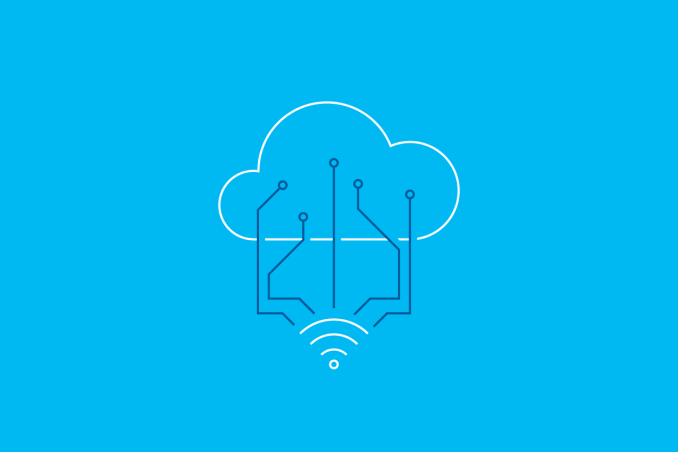The amount of data and devices your dealership requires to compete in today’s market has exploded in recent years. Wireless connectivity, mobile apps, and cloud computing have transformed the car buying experience. On average, a dealership uses seven software systems just to complete a sales transaction.¹ All of these technologies that enable critical business operations are dependent on the stability of your network infrastructure.
It’s no wonder that a major challenge for many dealerships is figuring out how to manage their complicated, mission-critical networks in a cost-effective way while ensuring maximum uptime to support productivity and cybersecurity protections. Failure to get it right can lead to employees and customers who are frustrated by slow network performance. Or even worse, a network outage or cyberattack can bring down a dealership’s entire network for days. The situation will only get trickier as new apps and devices are thrown into the mix.
“Most IT staff are consumed with just keeping the dealership engine running by managing day-to-day functions like keeping the internet up, making sure printers work, and managing team members’ issues, but anytime you add increased technology you also expose yourself to more security concerns.”
Evolving IT priorities
The people you trust with managing your dealership network have a lot on their plates. As your dealership modernizes how it uses technology to be more efficient, the complexity of the network increases exponentially. All the devices that support daily dealership operations — including computers, printers, tablets, and mobile phones — depend on your network.
Maintaining internal systems, Wi-Fi, and wireless and wired devices, and troubleshooting daily computing issues, is challenging enough. Most in-house IT staff or local providers simply don’t have the time or the training to understand how to manage network stability, bandwidth demands, and wireless coverage, or stay current with the cybersecurity defenses needed to secure your network environment. It is not realistic to expect that they could.
According to Brad Holton, chief executive officer of Proton Technologies, an IT support company that provides managed network services for dealerships, “Most IT staff are consumed with just keeping the dealership engine running by managing day-to-day functions like keeping the internet up, making sure printers work, and managing team members’ issues, but anytime you add increased technology you also expose yourself to more security concerns. Bringing in advanced resources to stabilize and secure your network infrastructure is essential to protecting the integrity and operational capacity of the dealership.”²
If internal resources manage the network, what happens when a key person takes vacation days or leaves the company? It increases the risk for the worst-case scenario to happen — and unfortunately, those scenarios are becoming more common for dealerships.
Headlines tell the story
“…84% of consumers would not buy a vehicle from a dealership that compromised their data.”
From ransomware attacks to data breaches, dealerships are increasingly the target of cybercriminals. In addition to the impact on operational efficiency to get back up and running, it only takes one incident for customers to lose confidence in your dealership and cripple brand reputation and revenue for years. A study by Total Dealer Compliance, a car dealership compliance-audit firm, found that nearly 84% of consumers would not buy a vehicle from a dealership that compromised their data.³
That’s why network management is no longer just a task for internal staff. Rather, it’s an ongoing strategic matter that requires expert attention.
The path forward
You should not expect the pace of new technology adoption at your dealership to slow. As more devices are deployed, more data will be routed through your network. You’ll need massive amounts of bandwidth to keep systems and devices running and vigilant monitoring of traffic to detect and mitigate security breaches.
To gain some peace of mind, many dealerships turn to network management companies to handle IT operations and direct cybersecurity protections, which reduces the need for internal resources.
Just like you are an expert in selling and servicing vehicles, managed network service (MNS) providers specialize in rapidly evolving network technologies, including boosting your bandwidth for faster operations and protecting your dealership against cyberattacks.
By working with a strategic partner that can help manage your network, you get support for all your digital assets based on industry best practices, 24/7, 365 days year, at a fixed monthly cost. But that’s just one of the benefits of working with an MNS provider.
As dealership operations become more reliant on multiple systems, there’s no time for network downtime. An MNS provider takes the burden of keeping your network running and optimized off your to-do list. You get proactive monitoring of systems and one point of contact that is always available to manage any issues that arise.
While there are many providers, it is critical to seek a partner that has dealership-specific expertise. They should be able to prove they understand how your business operates, the functions of each department, and the role of your dealer management system (DMS). That way, you get a solution tailored to your needs that is scalable for the long-term growth of your dealership.
Looking for other ways to increase operational efficiency at your dealership? Find out how a modular DMS can help you unlock your data and boost profits by downloading our eBook, “5 Ways a Modular DMS Opens New Possibilities for Profit.”
1. Dealertrack. “DMS: First Among Auto Dealership Systems” 2019. https://us-qa.dealertrack.com/dms-first-among-auto-dealership-systems/
2. Holton, Brad. Interview with Dealertrack. February 3, 2020.
3. Total Dealer Compliance. “Over 80% Of Consumers Would Not Purchase A Car From Dealership With A Data Breach.” 2015. https://www.totaldealercompliance.com/Computer%20Security%20Press%20Release.pdf



